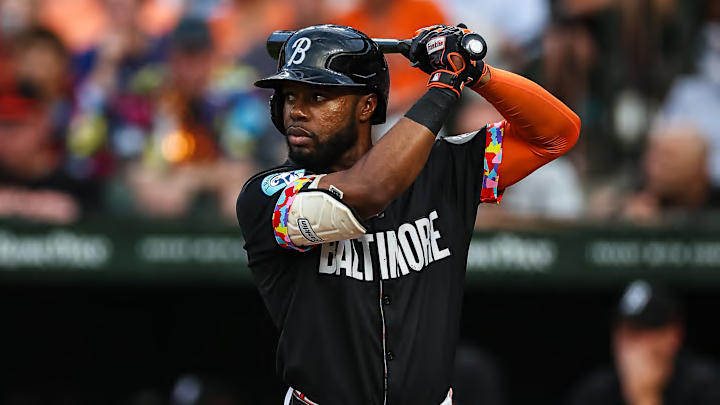When Cedric Mullins entered June with a .557 OPS, Orioles fans began to consider a future without the former All-Star manning center-field at Camden Yards. After all, a tremendous fielder and base-running threat could command a decent return on the trade market even with a down year at the plate. A recent run of good results at the plate, though, may have the Orioles rethinking their trade deadline plans.
As early as mid-May, Mullins’ struggles elicited calls for a revamp of the O’s lineup, but Austin Hays’ lingering calf injury spread the outfield thin. Colton Cowser, a potential fill-in as the everyday center fielder, has been just as streaky as Mullins. The 0.2 bWAR produced by the Orioles’ center fielders caused many to urge the team to look for further outfield support at the upcoming trade deadline.
That is, until Cedric Mullins flipped a switch. In the month of June, Mullins produced in just about every way imaginable. He contributed clutch hits against division rivals. He smashed homers onto Eutaw Street. He twisted and turned to score a game-tying run on a wild pitch. He produced a .849 OPS and accounted for ¼ of the team’s stolen bases.
GAME-TYING PLAY AT THE PLATE!
— MLB (@MLB) June 15, 2024
What a slide by Cedric Mullins! 🤯 pic.twitter.com/uJDx8TqvSR
Has Cedric Mullins done enough to convince the Orioles to stick with him as the trade deadline looms?
An argument in Mullins’ favor is the fact that his big moments come at big times. During his June hot streak, Mullins contributed .673 WPA, a statistic that measures how an offensive player’s contributions impact a team’s percentage chance of winning.
Only Gunnar Henderson and Ryan O’Hearn came through in big moments as often and as consistently as Mullins, as evidenced by their 1.263 and .795 WPA. In a tight division race, the Orioles may be loath to rid themselves of a player that has recently come through in the clutch.
WPA, though, is not predictive of future success. Mullins’ predictive stats tell a much more bleak story. His xWOBA and xWOBACON, which assess the expected value of a player’s at-bats and on contact, are both in the bottom 10 percent of Major League players. These statistics are eerily similar to his numbers in the short 2020 season, which was his worst as a full-time player.
The Orioles, though, may have some room for optimism that Mullins has made a real change in his approach. He has begun to turn his grounders into line drives. In the first three months of the season, only 13.6 percent of his hits were liners while 38.1 percent were grounders. He has evened those numbers out to 22.7 and 25.8 in the month of June.
The Orioles’ trade deadline approach depends on which version of Mullins is real. Has the June surge been a fluke, or will he subvert the predictive stats as the season wears on?
